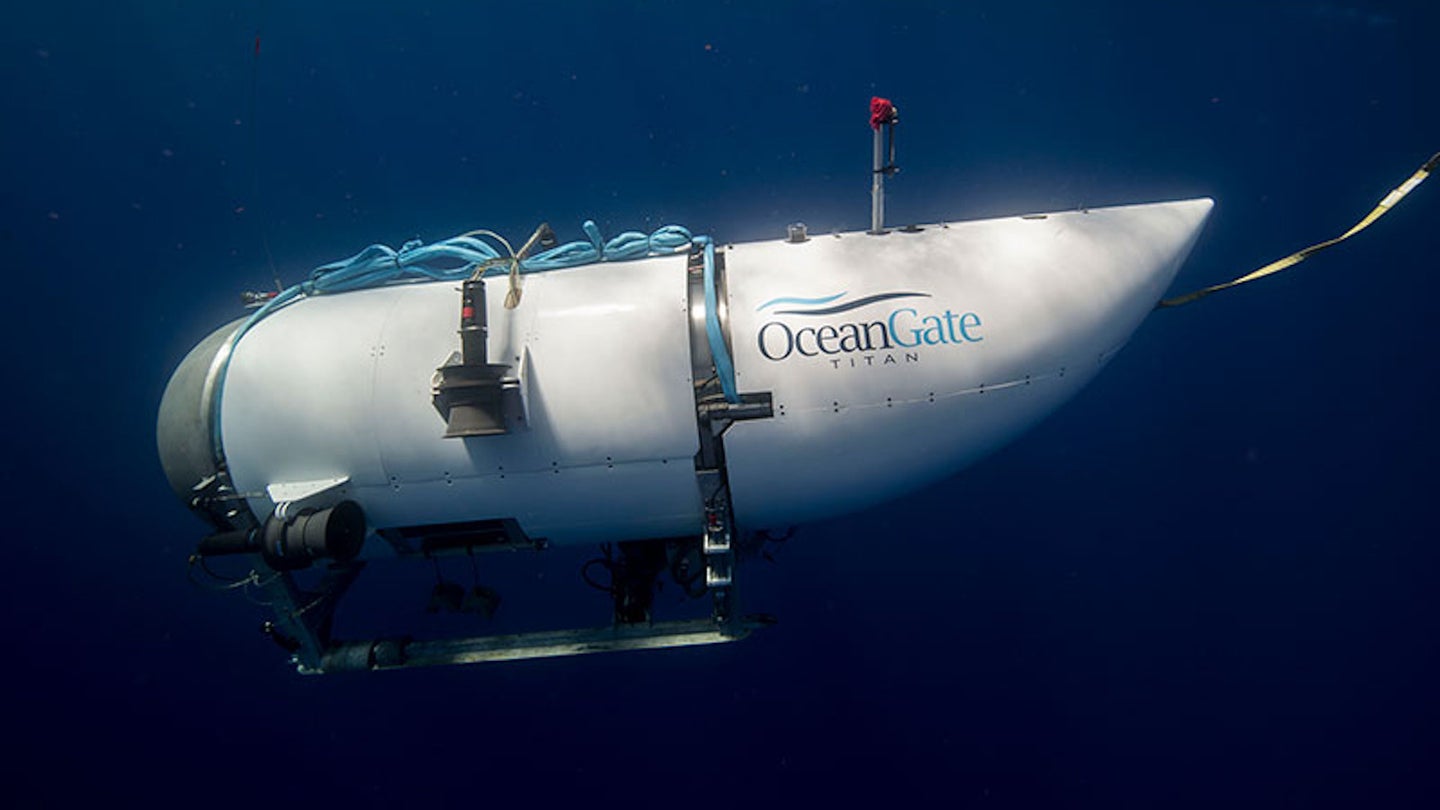
A deep-sea submersible built by the private research expedition company, OceanGate, is still missing after losing contact with its surface team on June 18 while en route to tour the Titanic’s sunken remains. Search-and-rescue efforts involving the US Coast Guard remain underway in search of the vessel carrying a billionaire explorer, the father-and-son scions of one of Pakistan’s wealthiest families, and two others. One OceanGate advisor estimates that the submersible has, at most, a 96-hour oxygen supply starting from when it launched at roughly 6 AM local time on Sunday.
According to OceanGate, its 22-foot-long, “revolutionary carbon fiber and titanium” Titan vessel boasts a depth range of 4,000 meters (13,123 feet), purportedly making it one of only three submersibles in the world capable of reaching the legendary shipwreck. The ability to reach such depths, however, makes it incredibly difficult to locate.
[Related: Staggering 3D scan of the Titanic shows the wreck down to the millimeter.]
Satellite communication methods like GPS are integral to location services on or near the Earth’s surface, but that ability quickly disappears as you head deeper underwater. One of the most popular devices, a Float-free Emergency Position Indicating Radio Beacon (FF EPIRB), is frequently utilized by the Coast Guard during rescue missions. But according to the Australian Maritime Safety Authority, EPIRBs activate only when a vessel capsizes to a depth of 1-4 meters—thus rendering them all-but-useless for a submersible such as Titan.
An experimental submersible deep below the surface will be much more challenging for authorities to find, requiring the use of special underwater equipment to search for the vessel and the signals it emits—if it emits any at all. As The New York Times notes, although many underwater vehicles include an acoustic device that emits detectable sounds underwater for rescuers, “it’s unclear if the Titan has one.”
Previous profiles of the Titan back up this potential oversight. In a 2022 Good Morning America segment detailing a previous, successful expedition to the Titanic, journalist David Pogue reads aloud a portion of the passenger waiver. In it, Titan is described as, “An experimental, submersible vessel that has not been approved or certified by any regulatory body, and could result in physical injury, disability, emotional trauma, or death.”
[Related: Watch never-before-seen footage of the Titanic shipwreck from the 1980s.]
In a follow-up Twitter thread this week, Pogue appears to confirm that Titan lacked any emergency distress location beacon at the time of his visit. “On my expedition last summer, they did indeed get lost for about 5 hours, and adding such a beacon was discussed…,” he writes.
OceanGate’s own CEO touted their cavalier approach to deep sea exploration at the time. “I got this from CampingWorld,” Stockton Rush says on camera, pointing to the Titan’s interior light. Rush then showed a modified video game controller, which he claimed controlled and steered the entire vessel. “It should be like an elevator. It shouldn’t take a lot of skill,” added Rush.
“The use off-the-shelf [sic] components helped to streamline the construction, and makes it simple to operate and replace parts in the field,” reads a portion of Titan’s official description.
The post Why finding the missing Titanic-bound tourist submersible is so challenging appeared first on Popular Science.
Articles may contain affiliate links which enable us to share in the revenue of any purchases made.
from | Popular Science https://ift.tt/2bTZoDg



0 Comments